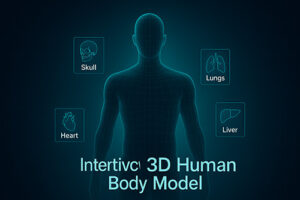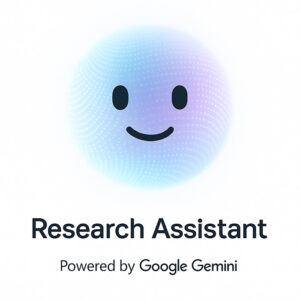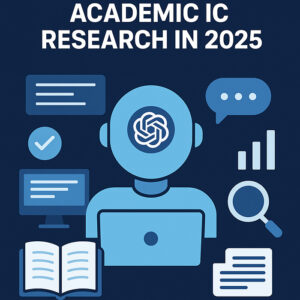Artificial Intelligence and Machine Learning: A Comprehensive Guide
Introduction
Artificial Intelligence (AI) and Machine Learning (ML) have transformed from abstract theoretical concepts to practical technologies that touch virtually every aspect of modern life. From the recommendations on your favorite streaming service to the autonomous vehicles being tested on our roads, AI and ML systems are increasingly becoming integral to how we interact with technology and with each other.
This comprehensive guide explores the fundamentals, applications, ethical considerations, and future directions of AI and ML. Whether you’re a student, researcher, business professional, or simply curious about these technologies, this guide provides a solid foundation for understanding these complex but fascinating fields.
Table of Contents
- Understanding Artificial Intelligence
- The Evolution of Machine Learning
- Key Machine Learning Approaches
- Deep Learning and Neural Networks
- Natural Language Processing
- Computer Vision
- Reinforcement Learning
- AI and ML Applications
- Ethical Considerations in AI
- The Future of AI and ML
- Getting Started with AI and ML
- Conclusion
Understanding Artificial Intelligence
Artificial Intelligence refers to the simulation of human intelligence in machines programmed to think and learn like humans. The concept of AI has existed for decades, but recent advancements in computing power, data availability, and algorithmic innovations have accelerated its development and application.
Types of AI
AI systems are often categorized based on their capabilities and scope:
Narrow or Weak AI: These systems are designed to perform specific tasks and operate within a limited context. Examples include virtual assistants like Siri or Alexa, recommendation systems on platforms like Netflix, and image recognition software. Despite being called “weak,” these systems can be highly sophisticated within their domain of application.
General or Strong AI: This refers to AI systems with generalized human cognitive abilities. When presented with an unfamiliar task, a strong AI system could find a solution without human intervention. True general AI doesn’t exist yet and remains largely theoretical.
Superintelligent AI: This hypothetical form of AI would surpass human intelligence across virtually all domains, including scientific creativity, general wisdom, and social skills. While popular in science fiction, superintelligent AI remains speculative.
AI Approaches
There are several approaches to creating intelligent systems:
Symbolic AI: Also known as “Good Old-Fashioned AI” (GOFAI), this approach uses explicit representations of knowledge and rules to guide reasoning. Symbolic AI excels in domains with clear rules but struggles with ambiguity and uncertainty.
Statistical AI: This approach uses statistical methods to enable machines to improve with experience. Machine learning, which we’ll explore next, falls under this category.
Hybrid Approaches: Many modern AI systems combine elements of both symbolic and statistical methods to leverage their respective strengths.
To learn more about the foundations of AI, visit MIT’s Introduction to AI course materials.
The Evolution of Machine Learning
Machine Learning is a subset of AI that focuses on building systems that learn from data rather than being explicitly programmed. The evolution of ML has been marked by several key developments.
Historical Development
The concept of machine learning emerged in the 1950s, with early pioneers like Arthur Samuel, who defined it as the “field of study that gives computers the ability to learn without being explicitly programmed.” His work on a checkers-playing program that improved with experience was groundbreaking at the time.
In the 1960s and 1970s, pattern recognition and the first neural networks emerged, but limited computing power and data availability constrained progress. The 1980s saw the resurgence of various ML techniques, including decision trees and support vector machines.
The 1990s and early 2000s brought statistical approaches to the forefront, with methods like random forests and ensemble learning gaining popularity. The development of more powerful algorithms, combined with increasing computational resources, set the stage for the ML revolution we’re experiencing today.
The Data Revolution
The exponential growth in available data has been a crucial driver of ML’s recent advances. With the proliferation of the internet, smartphones, IoT devices, and digital services, we now generate an estimated 2.5 quintillion bytes of data daily. This abundance of data provides the raw material that ML algorithms need to learn and improve.
As we’ve seen in our own Data Analytics for Business Decisions blog post, organizations that harness this data effectively gain significant competitive advantages.
For an excellent historical perspective on machine learning, check out The History of Machine Learning.
Key Machine Learning Approaches
Machine learning encompasses various approaches, each suited to different types of problems and data. Understanding these approaches is essential for applying ML effectively.
Supervised Learning
In supervised learning, algorithms learn from labeled data—examples that include both the input features and the desired output. The algorithm’s goal is to learn a mapping function that can predict the output for new, unseen inputs.
Common supervised learning tasks include:
Classification: Predicting a categorical label (e.g., determining whether an email is spam or not)
Regression: Predicting a continuous value (e.g., forecasting stock prices or housing values)
Popular supervised learning algorithms include:
- Linear and Logistic Regression
- Decision Trees
- Random Forests
- Support Vector Machines (SVMs)
- K-Nearest Neighbors (KNN)
Unsupervised Learning
Unsupervised learning algorithms work with unlabeled data, finding patterns or intrinsic structures without predefined outputs. These algorithms are particularly valuable for exploratory data analysis and feature discovery.
Common unsupervised learning tasks include:
Clustering: Grouping similar data points together (e.g., customer segmentation)
Dimensionality Reduction: Reducing the number of variables while preserving important information (e.g., principal component analysis)
Anomaly Detection: Identifying unusual patterns or outliers (e.g., fraud detection)
Popular unsupervised learning algorithms include:
- K-Means Clustering
- Hierarchical Clustering
- Principal Component Analysis (PCA)
- Autoencoders
- Generative Adversarial Networks (GANs)
Semi-Supervised Learning
Semi-supervised learning falls between supervised and unsupervised learning, using a combination of labeled and unlabeled data. This approach is particularly useful when labeled data is limited or expensive to obtain, which is often the case in real-world applications.
The core idea is to use the abundant unlabeled data to improve learning from the limited labeled data, often by making assumptions about how the data is structured. For example, points that are close to each other in the feature space are likely to have similar labels.
Transfer Learning
Transfer learning involves taking knowledge gained while solving one problem and applying it to a different but related problem. For example, a model trained to recognize cars might transfer some of its learned features to a model that recognizes trucks.
This approach has become increasingly important in deep learning, where models require substantial data and computational resources to train from scratch. By leveraging pre-trained models, researchers and practitioners can achieve impressive results with relatively limited resources.
To explore these approaches in more detail, visit Towards Data Science, a community of data scientists who regularly publish articles on machine learning topics.
Deep Learning and Neural Networks
Deep learning is a subset of machine learning that utilizes neural networks with multiple layers (hence “deep”) to progressively extract higher-level features from raw input. For example, in image recognition, lower layers might recognize edges, while higher layers might recognize more complex structures like faces or objects.
Neural Network Basics
At their core, neural networks are inspired by the structure and function of the human brain, consisting of interconnected nodes or “neurons” organized in layers:
Input Layer: Receives the initial data
Hidden Layers: Process the information through weighted connections
Output Layer: Produces the final result or prediction
Each neuron applies a transformation to its inputs, typically in the form of a weighted sum followed by a non-linear activation function. This non-linearity is crucial, allowing neural networks to learn and represent complex patterns.
Types of Neural Networks
Feedforward Neural Networks: The simplest type, where information flows in one direction from input to output.
Convolutional Neural Networks (CNNs): Specialized for processing grid-like data, such as images. CNNs use convolution operations to automatically detect important features without manual feature engineering.
Recurrent Neural Networks (RNNs): Designed for sequential data, with connections that form cycles, allowing information to persist. Long Short-Term Memory (LSTM) networks and Gated Recurrent Units (GRUs) are popular RNN variants that address the vanishing gradient problem in standard RNNs.
Transformers: A relatively recent architecture that has revolutionized natural language processing. Transformers use self-attention mechanisms to weigh the importance of different parts of the input data, enabling highly parallelizable and efficient processing of sequential data.
Deep Learning Frameworks
Several frameworks have emerged to facilitate the development and deployment of deep learning models:
TensorFlow: Developed by Google, TensorFlow offers comprehensive tools for building and deploying ML models across various platforms.
PyTorch: Created by Facebook’s AI Research lab, PyTorch is known for its flexibility and intuitive design, making it popular among researchers.
Keras: Now integrated with TensorFlow, Keras provides a high-level API that makes building neural networks more accessible.
For a deeper understanding of neural networks, check out Deep Learning by Ian Goodfellow, Yoshua Bengio, and Aaron Courville, a comprehensive free online resource.
Natural Language Processing
Natural Language Processing (NLP) focuses on enabling computers to understand, interpret, and generate human language. This field sits at the intersection of linguistics, computer science, and artificial intelligence.
Core NLP Tasks
Text Classification: Categorizing text into predefined classes (e.g., sentiment analysis, spam detection)
Named Entity Recognition (NER): Identifying and classifying named entities in text (e.g., persons, organizations, locations)
Part-of-Speech Tagging: Assigning grammatical categories to words (e.g., noun, verb, adjective)
Parsing: Analyzing the grammatical structure of sentences
Machine Translation: Translating text from one language to another
Question Answering: Providing answers to questions posed in natural language
Text Summarization: Generating concise summaries of longer texts
Transformer Revolution in NLP
The introduction of transformer-based models like BERT (Bidirectional Encoder Representations from Transformers) by Google and GPT (Generative Pre-trained Transformer) by OpenAI has significantly advanced the state of NLP.
These models are pre-trained on vast amounts of text data using self-supervised learning approaches, then fine-tuned for specific tasks. This approach has led to substantial improvements across various NLP benchmarks and enabled more natural and contextually appropriate language understanding and generation.
As discussed in our Content Creation in the Age of AI article, these advances are reshaping how we create and interact with textual content.
For a comprehensive collection of NLP resources, visit Stanford NLP Group’s resources page.
Computer Vision
Computer Vision (CV) is the field of AI that enables machines to derive meaningful information from visual inputs like images and videos. It aims to automate tasks that the human visual system can do.
Core Computer Vision Tasks
Image Classification: Assigning categories to images (e.g., determining whether an image contains a cat or a dog)
Object Detection: Identifying and locating objects within images
Semantic Segmentation: Classifying each pixel in an image into a category (e.g., person, car, building)
Instance Segmentation: Distinguishing individual instances of objects within the same category
Image Generation: Creating new images, often using generative adversarial networks (GANs) or diffusion models
Action Recognition: Identifying human actions in videos
Convolutional Neural Networks in Computer Vision
CNNs have been transformative for computer vision, enabling end-to-end learning from raw pixels to final outputs. Their architecture, inspired by the organization of the animal visual cortex, is particularly well-suited for processing visual data.
Key components of CNNs include:
Convolutional Layers: Apply filters to detect features like edges, textures, and patterns
Pooling Layers: Reduce spatial dimensions and computational complexity
Fully Connected Layers: Make final predictions based on the features extracted by earlier layers
Computer Vision Applications
Computer vision applications have proliferated across industries:
Healthcare: Medical image analysis, disease diagnosis, monitoring patient movement
Retail: Visual search, automated checkout, inventory management
Manufacturing: Defect detection, quality control, robotic guidance
Transportation: Autonomous vehicles, traffic monitoring, parking management
Security: Facial recognition, surveillance, anomaly detection
For cutting-edge research in computer vision, follow updates from CVPR (Conference on Computer Vision and Pattern Recognition), one of the premier annual computer vision events.
Reinforcement Learning
Reinforcement Learning (RL) is a type of machine learning where an agent learns to make decisions by taking actions in an environment to maximize some notion of cumulative reward. Unlike supervised learning, RL does not require labeled input/output pairs but focuses on finding a balance between exploration (of uncharted territory) and exploitation (of current knowledge).
Key Reinforcement Learning Concepts
Agent: The learner or decision-maker
Environment: Everything the agent interacts with
State: The current situation of the agent
Action: What the agent can do
Reward: Feedback from the environment
Policy: The agent’s strategy to determine the next action based on the current state
RL Approaches
Value-Based Methods: Learn the value of being in a given state or taking a specific action in a state (e.g., Q-learning)
Policy-Based Methods: Directly learn the optimal policy without maintaining a value function (e.g., policy gradient methods)
Model-Based Methods: Learn a model of the environment’s behavior to make predictions and plan
Actor-Critic Methods: Combine value-based and policy-based approaches
Reinforcement Learning Applications
RL has demonstrated remarkable success in various domains:
Games: Achieving superhuman performance in chess, Go (AlphaGo), and video games (Atari games, Dota 2)
Robotics: Learning complex motor skills and manipulation tasks
Resource Management: Optimizing data center operations, network routing, and power systems
Healthcare: Developing personalized treatment strategies
Finance: Algorithmic trading and portfolio management
For an excellent introduction to reinforcement learning, check out Sutton and Barto’s Reinforcement Learning: An Introduction, a fundamental text in the field.
AI and ML Applications
The applications of AI and ML span virtually every industry and sector, transforming how we work, live, and interact with technology.
Healthcare
AI and ML are revolutionizing healthcare through:
Diagnostic Assistance: Algorithms that can detect diseases from medical images, often with accuracy comparable to or exceeding that of human specialists
Drug Discovery: Accelerating the identification of potential therapeutic compounds and predicting their properties
Personalized Medicine: Tailoring treatments based on individual patient characteristics
Health Monitoring: Using wearable devices and AI to continuously monitor patient health and predict potential issues
Finance
The financial sector has widely adopted AI and ML for:
Fraud Detection: Identifying unusual patterns that may indicate fraudulent activities
Algorithmic Trading: Executing trades at optimal prices and times based on market conditions
Credit Scoring: Assessing creditworthiness more accurately by considering a broader range of factors
Customer Service: Implementing chatbots and virtual assistants to handle routine inquiries
Manufacturing
In manufacturing, AI and ML are driving the Fourth Industrial Revolution through:
Predictive Maintenance: Anticipating equipment failures before they occur, reducing downtime
Quality Control: Automatically inspecting products for defects with greater accuracy and consistency than manual inspections
Supply Chain Optimization: Forecasting demand and optimizing inventory levels
Process Optimization: Identifying inefficiencies and suggesting improvements in production processes
Retail
Retailers leverage AI and ML for:
Personalized Recommendations: Suggesting products based on customer preferences and behavior
Inventory Management: Predicting demand and optimizing stock levels
Price Optimization: Dynamically adjusting prices based on various factors, including demand, competition, and customer behavior
Customer Insights: Analyzing customer data to identify trends and patterns
For more industry-specific applications, explore McKinsey & Company’s research on AI adoption.
Ethical Considerations in AI
As AI and ML become more pervasive, ethical considerations become increasingly important. Responsible development and deployment of these technologies require addressing several key concerns.
Bias and Fairness
AI systems can inherit and amplify biases present in their training data. For example, facial recognition systems have shown higher error rates for women and people with darker skin tones, reflecting biases in the datasets used for training.
Addressing bias requires:
Diverse and Representative Data: Ensuring training data covers a wide range of demographics and scenarios
Regular Auditing: Continuously monitoring systems for biased outcomes
Fairness Metrics: Developing and applying appropriate measures of fairness
Transparency: Being open about how systems work and their limitations
Privacy and Data Protection
AI systems often require large amounts of data, raising concerns about privacy and data protection:
Data Minimization: Collecting only the data necessary for the intended purpose
Anonymization and Aggregation: Protecting individual identities when using personal data
User Consent: Ensuring individuals understand and agree to how their data will be used
Data Security: Implementing robust measures to protect data from unauthorized access or breaches
Accountability and Transparency
As AI systems make increasingly important decisions, questions of accountability arise:
Explainable AI: Developing systems that can provide understandable explanations for their decisions
Human Oversight: Maintaining appropriate human supervision, especially for high-stakes decisions
Clear Responsibility: Establishing who is accountable when AI systems cause harm
Regulatory Frameworks: Developing appropriate legal and regulatory structures for AI governance
Job Displacement and Economic Impact
Automation through AI and ML raises concerns about job displacement and economic inequality:
Workforce Transition: Providing training and support for workers in affected industries
New Job Creation: Recognizing and preparing for new types of jobs that emerge from AI adoption
Equitable Distribution: Ensuring the benefits of AI are widely shared across society
For in-depth discussions on AI ethics, visit the IEEE’s Ethics in Action initiative, which provides resources and guidelines for ethical technology development.
The Future of AI and ML
The field of AI and ML continues to evolve rapidly, with several emerging trends and technologies shaping its future.
AutoML and Democratization
Automated Machine Learning (AutoML) tools are making ML more accessible to non-specialists by automating many aspects of the model development process, including feature selection, algorithm selection, and hyperparameter tuning. This democratization of AI is enabling more organizations and individuals to leverage these technologies.
Edge AI
Edge AI involves deploying AI models directly on devices rather than in the cloud. This approach reduces latency, enhances privacy, and enables operation in environments with limited connectivity. As edge devices become more powerful, we can expect to see more sophisticated AI applications running locally on smartphones, IoT devices, and other edge hardware.
AI-Augmented Creativity
AI is increasingly being used to augment human creativity in areas like art, music, writing, and design. Tools like DALL-E, Midjourney, and various music generation systems are enabling new forms of creative expression and collaboration between humans and AI.
Multimodal AI
Future AI systems will increasingly integrate multiple modalities, such as vision, language, and audio, enabling more comprehensive understanding and interaction with the world. These multimodal systems can understand relationships between different types of data, like connecting spoken instructions with visual contexts.
Neuromorphic Computing
Neuromorphic computing aims to design hardware that mimics the structure and function of the human brain. These specialized chips could significantly improve the efficiency and capabilities of AI systems, particularly for tasks that require real-time processing of sensory data.
AI Regulation and Governance
As AI becomes more powerful and pervasive, we can expect increasing focus on regulation and governance. Frameworks for ensuring responsible and beneficial AI development are emerging at organizational, national, and international levels.
For insights into cutting-edge AI research, follow publications from organizations like OpenAI and DeepMind.
Getting Started with AI and ML
For those interested in exploring AI and ML further, there are numerous resources and pathways available.
Educational Resources
Online Courses: Platforms like Coursera, edX, and Udacity offer comprehensive courses on AI and ML, including Andrew Ng’s popular Machine Learning course and the Deep Learning Specialization.
Books: “Hands-On Machine Learning with Scikit-Learn, Keras, and TensorFlow” by Aurélien Géron and “Deep Learning” by Ian Goodfellow, Yoshua Bengio, and Aaron Courville are excellent resources for beginners and advanced practitioners alike.
Tutorials and Documentation: Libraries like TensorFlow, PyTorch, and scikit-learn provide extensive documentation and tutorials for hands-on learning.
Tools and Frameworks
For Beginners: Google Colab provides a free, cloud-based Jupyter notebook environment with access to GPUs, making it ideal for learning and experimentation.
Programming Languages: Python has emerged as the dominant language for AI and ML development, though R remains popular for statistical analysis.
Libraries and Frameworks: TensorFlow, PyTorch, scikit-learn, and Keras are widely used for implementing ML models, while libraries like NLTK, spaCy, and Hugging Face’s Transformers are popular for NLP tasks.
Practical Steps
Build a Strong Foundation: Start with the fundamentals of mathematics (linear algebra, calculus, probability) and programming.
Work on Projects: Apply your knowledge to real-world problems, starting with simple projects and gradually increasing complexity.
Participate in Competitions: Platforms like Kaggle host competitions that provide opportunities to tackle interesting problems and learn from the community.
Join Communities: Engage with AI and ML communities through forums, social media, and local meetups to share knowledge and stay updated.
Stay Current: The field evolves rapidly, so regularly reading research papers, blogs, and news can help you stay informed about the latest developments.
For a structured learning path, consider following our Beginner’s Guide to Machine Learning which provides a step-by-step approach for newcomers to the field.
Conclusion
Artificial Intelligence and Machine Learning represent some of the most transformative technologies of our time. From healthcare and finance to manufacturing and entertainment, these technologies are reshaping industries and creating new possibilities for how we live and work.
However, as with any powerful technology, AI and ML come with responsibilities and challenges. Addressing issues of bias, privacy, accountability, and economic impact is essential for ensuring these technologies benefit humanity broadly and equitably.
As we move forward, the continuous dialogue between technical innovation and ethical consideration will be crucial in shaping an AI future that reflects our values and aspirations. By understanding both the capabilities and limitations of these technologies, we can harness their potential while mitigating their risks.
Whether you’re a student, professional, policymaker, or simply a curious individual, engaging with AI and ML—their concepts, applications, and implications—is increasingly becoming not just a technical endeavor but a form of civic participation in shaping our collective future.
Further Reading and Resources
For those looking to deepen their understanding of AI and ML, here are some valuable resources:
- AI Index Report – Stanford University’s annual report on AI progress and impact
- Elements of AI – A free online course on the basics of AI
- Distill – A modern medium for presenting machine learning research
- arXiv.org – A repository of research papers, including many on AI and ML
- AI Ethics Guidelines Global Inventory – A collection of ethical guidelines for AI
Remember, the journey into AI and ML is not just about learning algorithms and coding techniques but also about understanding their broader implications and how they can be used to address meaningful problems in the world.
This article was last updated on March 11, 2025, and reflects information available up to that date. As the field of AI and ML evolves rapidly, some details may have changed since publication.









